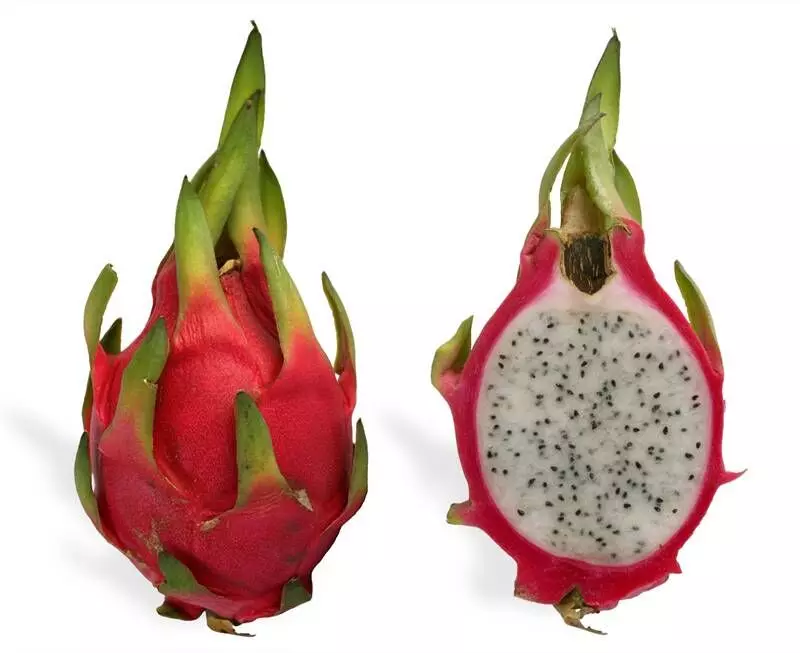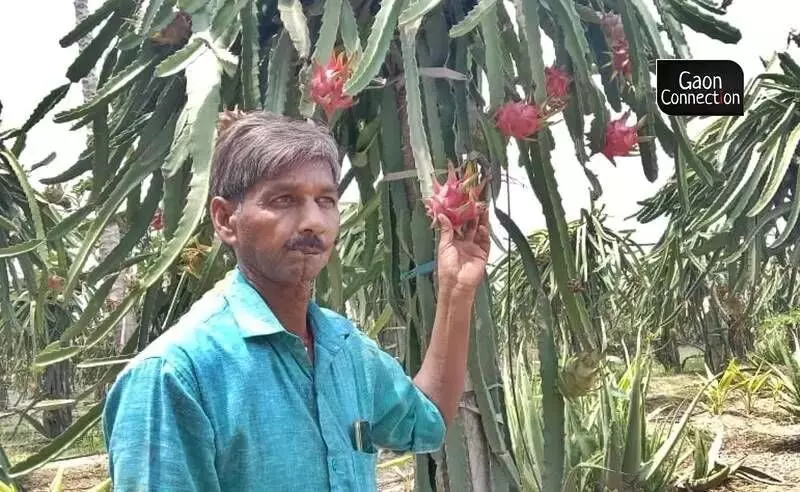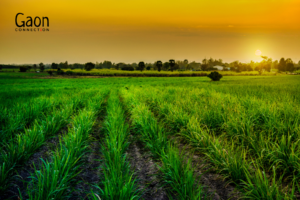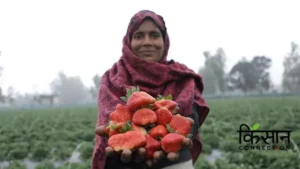Belhara, Barabanki (Uttar Pradesh)
Distressed by the frequent damages to his paddy and wheat crops due to adverse weather conditions, five years ago, Gaya Prasad Maurya, a farmer from Barabanki district in Uttar Pradesh switched to cultivating a crop that hadn’t been grown in his district before, the dragon fruit.
“Crop after crop was getting damaged and I could barely afford the losses. I decided to plant dragon fruit on a hectare of land in 2017. I invested about Rs 600,000 on cultivating it and after almost two years, I began harvesting the fruits,” Maurya, a resident of Mohammadipur village told Gaon Connection.
According to Maurya, the dragon fruit is in high demand in metropolitan cities like Mumbai, Delhi, Pune and Bengaluru and is sold at a market price of Rs 300-Rs 400 per kilogramme.
“What is unique about this fruit is that its production is not really affected by drought, floods or any other weather anomalies. It’s almost like a cactus-plant which needs very little care and supervision,” the farmer said.
Maurya is amongst very few farmers in the state who have taken up dragon fruit farming which is otherwise prevalent in states like Gujarat, Karnataka, West Bengal, Maharashtra, Tamil Nadu and Kerala.
At present, Maurya’s harvest is supplied to the state capital Lucknow, 50 kilometers away from his village.
Government encourages farmers to grow dragon fruit
At least a dozen farmers like Maurya are engaged in the experimental phase of dragon fruit cultivation in the district, said Ganesh Chandra Mishra, a Barabanki-based assistant horticulture officer in the Department of Horticulture and Food Processing.
“In the wake of a rapidly changing climate, farmers are finding it increasingly difficult to stick to farming wheat and paddy. It is becoming unprofitable and unsustainable,” he pointed out. “Therefore, we encourage farmers to cultivate new varieties of crops which are not only climate-resilient but also profitable for them,” Mishra told Gaon Connection.
“The state government provides a financial assistance of Rs 30,000 per hectare for a farmer who cultivates dragon fruit. We also provide them with technical assistance. Once planted, the dragon fruit yields a harvest for the next 25 years with nominal expenses on insecticides and general maintenance,” he explained.

Dragon fruit is in high demand in metropolitan cities like Mumbai, Delhi, Pune and Bengaluru and is sold at a market price of Rs 300-Rs 400 per kilogramme.
Almost 10,000 kilograms of dragon fruit can be produced annually on an hectare of agricultural field.
As per the Union Ministry of Commerce and Industry, production of dragon fruit commenced in India in early 1990s and it was largely grown in ‘home gardens’.
In a statement the ministry said that the high export value of the exotic ‘dragon fruit’ has encouraged farmers to take up its cultivation. There are three main varieties of dragon fruit: white flesh with pink skin, red flesh with pink skin, and white flesh with yellow skin. However, the red and white flesh is what is most relished by the consumers.
A research paper, Dragon Fruit Country Report From India published by the Indian Council of Agricultural Research (ICAR), observes that the marketability of dragon fruit in the region is expected to be very high because of limited number of commercial producers and high demand.

The flesh of the dragon fruit is similar to kiwi.
“There is a potential for off season production of Dragon fruit in India, and the market price remains as high as INR [Indian Rupee] 150.00 to 250.00 per kg during off season. In the future, production is expected to rise; hence, marketing strategies need to be critically examined,” the paper reported. It also stated how in the event of a market glut, there is a strong need to explore the avenues of value addition through processing, so that the production will be continue to increase and the surplus produce can be processed.
According to ICAR, there is still a dearth of information on crop management and multiple cropping schemes integrating Dragon fruit to other crops cultivation in location specific areas. Hence, there is an urgent need for focused research and development in the field of dragon fruit cultivation.
Resistant to pests, safe from stray cattle
Ashok Kumar, a resident of Khadra village, cited the sturdiness of the dragon fruit that made it so advantageous to cultivate.
“I was amongst the first farmers in the district to grow dragon fruit almost five years ago. The initial investment is a bit high but the long term benefits are multifold — it is not only strong enough to survive dry spells when almost every crop withers, but it is also resistant to pests. Also, due to its cactus-like spiny exterior, no cattle dares to even approach this plant, which is a blessing for farmers in the area who are struggling to deal with crop damage due to stray cattle menace,” he told Gaon Connection.
“Not only does it require negligible amounts of pesticides, the crop also needs relatively small quantities of fertilisers for a good harvest. The expense sustained in the beginning is high because the plant needs a pillar for support and its installation is a labour-intensive job,” Harishchandra Singh, a dragon fruit cultivator, from Barabanki’s Amseruva village told Gaon Connection.
“Even when the temperatures are above 42 degrees celsius the plant just does fine. It turns slightly yellowish during oppressive heat but returns to its original colour once the temperature climbs down,” the farmer added.
The first batch of farmers in the state are getting ready to supply the fruit to the nearby markets in Lucknow. The fruit is known to keep blood sugar down and till recently the demand for it had to be met by importing it from other states such as Gujarat.

The dragon fruit is exported from Gujarat and West Bengal to countries abroad.
According to a press statement issued by the Union Ministry of Commerce and Industry on August 3, 2021, in a major boost to exports of exotic fruit, dragon fruit from the two states were exported for the first time to the United Kingdom and Bahrain last year.


















